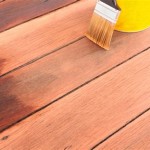How to Get Rid of Scratches on Furniture
Furniture scratches, regardless of how careful one might be, are an unavoidable reality of homeownership. From errant pet claws to the accidental bump of a moving box, these blemishes can detract from the overall appearance of even the most meticulously maintained pieces. Fortunately, a variety of methods exist to address these imperfections, ranging from simple home remedies to more specialized repair techniques. The appropriate approach will depend on the severity of the scratch, the type of finish on the furniture, and one's comfort level with DIY repair.
The first step in addressing furniture scratches is to accurately assess the damage. Superficial scratches, often referred to as surface scratches, only affect the top layer of finish and do not penetrate the wood itself. These types of scratches are typically shallow and appear as light abrasions. Deeper scratches, on the other hand, penetrate the finish and expose the underlying wood. These scratches are more noticeable and require more substantial repair techniques to effectively conceal them. Identifying the depth of the scratch is crucial for selecting the correct repair method and achieving optimal results.
Furthermore, understanding the type of finish applied to the furniture is equally important. Common furniture finishes include lacquer, varnish, polyurethane, shellac, and wax. Each finish reacts differently to various cleaning agents and repair methods. Attempting to use a technique designed for one finish on another could potentially worsen the damage. Consulting the furniture manufacturer's information or conducting a discreet test patch on an inconspicuous area of the furniture can provide valuable insight into the type of finish and its sensitivity to different treatments.
Concealing Minor Surface Scratches: The Walnut Trick
For minor surface scratches, a simple and surprisingly effective solution involves using a walnut. The natural oils present in walnuts can help to fill in the scratch and blend it with the surrounding finish. To utilize this method, select a shelled walnut and gently rub the nut meat along the length of the scratch. Apply moderate pressure, allowing the oils to be released and penetrate the scratch. Continue rubbing for several minutes, working the oils into the surrounding area. After applying the walnut oil, use a soft, clean cloth to buff the area, removing any excess oil and blending the repair with the existing finish. This method is particularly effective on darker wood finishes, as the natural color of the walnut helps to camouflage the scratch. This simple technique leverages the natural properties of the walnut to offer a readily available and environmentally friendly solution to minor scratch repair.
It is important to note that the walnut method is best suited for very light, superficial scratches. Deeper scratches or scratches on lighter wood finishes may not respond as effectively to this treatment. In such cases, alternative repair methods may be necessary to achieve satisfactory results. Moreover, some individuals may be allergic to nuts. Ensure that anyone handling walnuts for furniture repair is aware of any potential allergies.
An alternative to walnuts is using crayons or wax sticks that closely match the color of the furniture. These products are specifically designed for filling in scratches and imperfections in wood surfaces. Select a crayon or wax stick that is as close as possible in color to the furniture's finish. Carefully apply the crayon or wax stick to the scratch, filling it in completely. Use a plastic scraper or a credit card to remove any excess wax, ensuring that the surface is flush with the surrounding finish. Finally, buff the area with a soft cloth to blend the repair and create a uniform appearance. Similar to the walnut method, this approach is most effective on minor scratches and may not provide a permanent solution for deeper damage.
Addressing Deeper Scratches: The Importance of Wood Fillers
Deeper scratches that penetrate the finish and expose the underlying wood require a more comprehensive approach. In these cases, wood fillers can be used to fill the scratch and restore the surface to its original level. Wood fillers are available in a variety of colors and types, including paintable and stainable options. Selecting the appropriate wood filler is crucial for achieving a seamless and professional-looking repair. Choose a wood filler that closely matches the color of the surrounding wood, or opt for a paintable or stainable filler that can be customized to match the existing finish.
Before applying the wood filler, thoroughly clean the area around the scratch. Remove any loose debris or dirt that may interfere with the adhesion of the filler. Use a clean cloth dampened with mineral spirits to degrease the surface, ensuring a clean and smooth bonding surface. Apply the wood filler to the scratch using a putty knife or a small spatula. Overfill the scratch slightly, allowing the filler to protrude above the surrounding surface. This will compensate for any shrinkage that may occur as the filler dries.
Allow the wood filler to dry completely according to the manufacturer's instructions. Drying times can vary depending on the type of filler and the ambient temperature. Once the filler is dry, use fine-grit sandpaper (220-grit or higher) to carefully sand the surface flush with the surrounding finish. Sand lightly and evenly, avoiding excessive pressure that could damage the surrounding area. If the scratch is on a flat surface, use a sanding block to ensure a level and uniform finish. If the scratch is on a curved or contoured surface, use your fingers or a flexible sanding pad to conform to the shape of the furniture.
After sanding, remove any sanding dust with a tack cloth. If using a paintable or stainable wood filler, apply a matching stain or paint to the filled area. Use a fine-tipped brush to carefully apply the stain or paint, blending it with the surrounding finish. Allow the stain or paint to dry completely. Once dry, apply a clear topcoat to protect the repaired area and create a seamless finish. The topcoat should match the existing finish of the furniture. Apply the topcoat in thin, even layers, allowing each layer to dry completely before applying the next. Sand lightly between coats to create a smooth and durable finish.
Proper preparation and patience are key to achieving a successful wood filler repair. Taking the time to carefully clean, fill, sand, and finish the area will result in a repair that is virtually invisible. While wood filler can effectively address deeper scratches, it may not be suitable for large areas of damage or for furniture with intricate details. In such cases, professional furniture repair services may be necessary.
Utilizing Touch-Up Markers and Pens: A Quick and Simple Solution
For scratches that are not particularly deep but are still noticeable, touch-up markers and pens offer a convenient and quick solution. These products are specifically designed to conceal minor imperfections and blend them with the surrounding finish. Touch-up markers and pens are available in a wide range of colors and finishes, making it easy to find a match for most furniture pieces. When selecting a touch-up marker or pen, it is essential to choose a color that is as close as possible to the furniture's finish. Consider testing the marker or pen on an inconspicuous area of the furniture to ensure a good color match.
Before applying the touch-up marker or pen, clean the area around the scratch. Remove any loose debris or dirt that may interfere with the application. Shake the marker or pen well to ensure that the pigment is evenly distributed. Carefully apply the marker or pen to the scratch, following the grain of the wood. Avoid applying too much product, as this can create a noticeable buildup. If necessary, use a clean cloth to blot away any excess ink. Allow the ink to dry completely according to the manufacturer's instructions. Once dry, buff the area with a soft cloth to blend the repair with the surrounding finish.
Touch-up markers and pens are a convenient option for concealing minor scratches and imperfections. However, they are not a permanent solution and may require periodic reapplication. Additionally, these products may not be suitable for deeper scratches or for furniture with intricate details. In such cases, alternative repair methods may be necessary to achieve satisfactory results.
Ultimately, addressing scratches on furniture requires a careful assessment of the damage, an understanding of the finish type, and the selection of the appropriate repair method. Beginning with less intrusive methods and progressing to more comprehensive techniques as needed is a prudent approach. Proper preparation, patience, and attention to detail are essential for achieving a successful and long-lasting repair. While DIY methods can effectively address many types of furniture scratches, professional furniture repair services offer specialized expertise and tools for more complex or extensive damage.

5 Easy Ways To Fix Scratched Furniture

Tested 5 Ways To Remove Scratches From Wood Furniture A Butterfly House

4 Steps To Fixed Scratched Furniture Repair

Wood Scratch Repair How To Remove Scratches From Artisan Born

3 Simple Ways To Fix Deep Scratches In Wood Wikihow

Get Scratches Out Of Wood Practical Diy Advice

How To Fix Scratches On Wood Furniture In 3 Easy Steps

Tested 5 Ways To Remove Scratches From Wood Furniture A Butterfly House

How To Fix Wood Scratches Easy

How To Fill In Furniture Scratches Salvaged Inspirations








